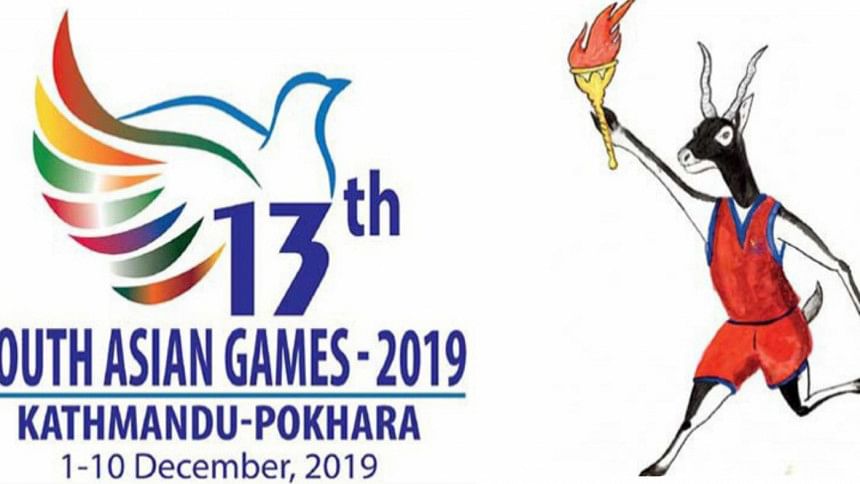Kathmandu set for 13th SA Games opening

The 13th South Asian Games is all set to get underway through a colourful opening ceremony at the Dasarath Rangasala in Kathmandu today.
This will be the third time, first since 1999, that the capital of Nepal will host the biggest multi-sport event of South Asia, with Pokhara and Janakpur as the two other co-hosts.
The majority of close to 5000 athletes and officials from seven countries of the SAARC region, including 463 athletes and 133 officials from Bangladesh, have already descended upon these two cities to vie for glory in 26 disciplines over the next 10 days.
Although SAARC as a regional political platform has lost much of its relevance due to a continuous stand-off between two of its nuclear superpowers, the SA Games remains the most important platform for the majority of athletes of this region who do not often get a chance to showcase their skills at higher levels of competition like the Asian Games and Olympics.
There is no shortage of promotion from the organisers and interest from the locals regarding the SA Games, which had its first edition held at this valley 35 years ago and is making a comeback after two decades.
But it has not been a happy homecoming as far as the build-up to the Games is concerned. Nepal was devastated by a deadly earthquake four years ago and the country, which relies heavily on its tourism and remittance from migrant workers on its economic front, is barely recovering from the scars of that disaster. In the wake of that disaster, the SA Games were deferred three times and even as late as three months ago serious questions were raised regarding Nepal’s ability to meet the challenges of successfully hosting a multi-sport event like this in the face of 21st century demands.
The Nepalese government took this as an image issue and rallied round the organising committee to make the Games happen.
As the last coats of paint were put on the galleries and the last drills were held on the green pitch of the Dasarath Rangasala, Ramesh Kumar Silwal, the member secretary of the organising committee, could not hide his excitement at overcoming the challenges during a briefing of reporters.
“It was a challenge,” he said. “But where would the satisfaction come from if there was no challenge?”
Challenges were aplenty, not the least of which was raising the Dasarath Rangasala from the rubble of 2015. The stadium, which used to be the only internationally accepted venue for football and athletics in the country, just got back on its feet in time to host these Games.
And there are many small venues like this one -- 28 according to Silwal, both in Kathmandu and in Pokhara, which have either been renovated or rebuilt ahead of these Games.
It is a matter of prestige as well as of pride. Despite political instability plaguing this landlocked nation for long, Nepal takes tremendous pride in its rich history and culture, and that will be the theme of the opening ceremony this evening.
“The opening ceremony will showcase the culture, heritage and traditions of Nepal as well as of South Asia. The Games will spread the word of peace, with the pigeon being chosen as the logo for the Games while the Black Buck [an endangered species of antelope] was chosen as mascot,” Silwal explained.
There have been some questions regarding mismanagement and facilities coming from the participating teams, but the organisers have ensured that they are doing their best to ensure the safety and comfort of their guests. In trying to meet the demands of changing times, they are offering fool-proof security to athletes, who were even escorted by armed police while traveling from the airport to the hotels.
On the pitches and in the courts too, Nepal are hoping that as hosts, they will be catapulted from their previous sixth position up towards somewhere closer to the top of the medals tally, but it will be the successful hosting and organising of events and people over the next 10 days that will give these Games a seal of approval.

 For all latest news, follow The Daily Star's Google News channel.
For all latest news, follow The Daily Star's Google News channel. 






Comments